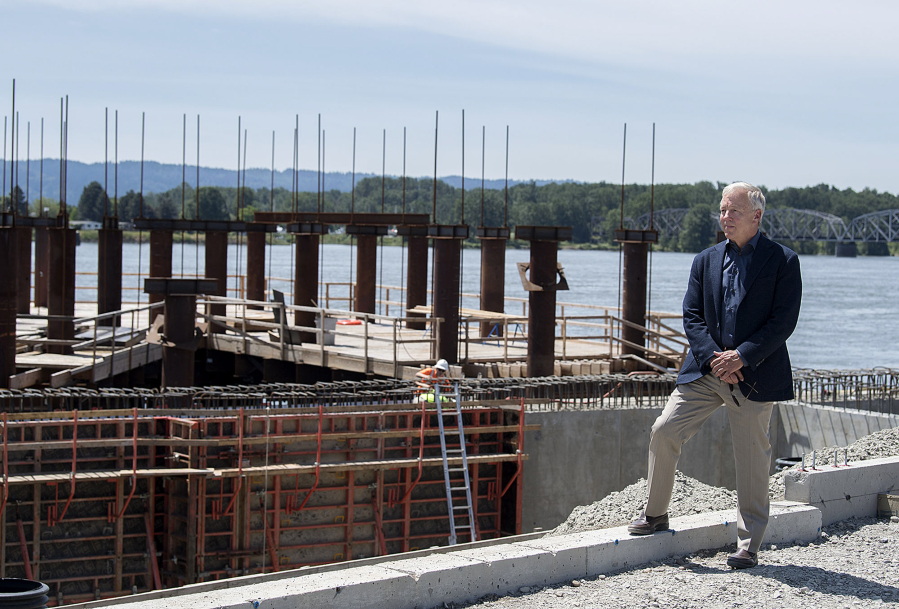Right now, The Waterfront Vancouver is little more than a construction yard near the Columbia River, but its recent progress is clear. Passengers in planes overhead and cars crossing the Interstate 5 Bridge can see its profile is rising every day.
It’s a different story for the man who is perhaps its most pivotal figure. On a recent afternoon, Barry Cain, the president of Gramor Development, walked through the site largely unnoticed by construction workers, and he was even briefly confronted. After Cain hiked up a makeshift walkway onto the unfinished Grant Street Pier, a worker told Cain that he needed permission from a supervisor.
“I’ll talk with him later,” Cain said, as he waved him off with a tube of rolled-up waterfront plans. The worker shrugged.
A few moments later, Cain stood at the edge of the pier and unfurled the plans for the 90-foot cable-stayed pier. He wasn’t bothered by the interaction. If anything, he seemed amused. “Maybe I should put a sticker on a hard hat or something,” he said.




